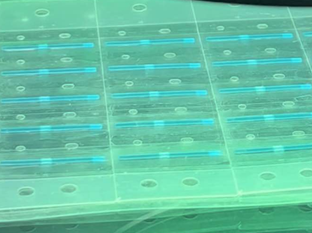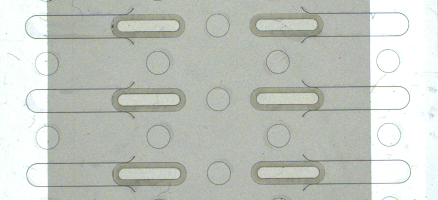
Comprehensive Applications of Machine Vision in the Die-Cutting Industry
I. Why Does the Die-Cutting Industry Need Machine Vision?

1. High precision requirements: Tolerances for die-cut products (e.g., flexible screen glass covers, precision labels) often need to be controlled within ±0.1mm, which is difficult for the human eye to achieve;
2. High consistency demands: In mass production, manual visual inspection is prone to fatigue, leading to missed defects or misjudgments;
3. Complex Process Challenges: When cutting multi-layer materials, hidden defects like burrs, misalignment, and bubbles frequently occur;
4. Cost Reduction and Efficiency Imperative: Replacing manual full inspection to reduce rework rates;
5. Data Traceability Pressure: Mandatory recording of quality data throughout the production process, particularly in industries like automotive and medical.
II. Four Core Application Scenarios


Die-cutting technology is widely applied across multiple industries including electronics, packaging, automotive, and medical fields, involving diverse materials such as paper, film, and metal foil. In these complex production processes, even minor errors can lead to significant quality issues.
1. Material Feeding Positioning Compensation: Line scan cameras and red auxiliary positioning lasers rapidly locate substrate coordinates via mark points/QR codes/product contours. They calculate deviations between actual and theoretical positions, feeding this data to motion platforms for real-time adjustments.
2. In-Process Die-Cutting Inspection: Pixel calibration and sub-pixel edge detection measure circular hole diameter deviations.
3. Final Inspection and Grading of Finished Products: Combines color recognition (distinguishing light/dark shades), 3D point cloud reconstruction (measuring curved surface radii), and near-infrared transmission (detecting internal bubbles). Rejects are automatically marked and diverted to the scrap bin, while acceptable products are graded and packaged accordingly;
4. Equipment Condition Monitoring: Periodically captures images of the die-cutting blade's side surface, using texture analysis to predict replacement cycles.
Machine vision is reshaping the die-cutting industry's quality control system, shifting from “post-production sorting” to “pre-emptive prevention + in-process control.” Enterprises are advised to follow a “point-to-surface, easy-to-difficult” implementation path: prioritize piloting in highest-value processes (e.g., positioning compensation before blanking), then gradually expand across the entire chain after accumulating successful cases.
Product recommendation
TECHNICAL SOLUTION
MORE+You may also be interested in the following information
FREE CONSULTING SERVICE
Let’s help you to find the right solution for your project!

- APPICATION CASE
- RESOURCE CENTER
- DOWNLOAD CENTER
SOLUTIONS SUPPORT
- ZOOM LENS SELECTION TOOL
- TELECENTRIC LENS SELECTION TOOL
- FA LENS SELECTION TOOL
- ZOOM RATIO TABLE
- CERTIFIED MODEL
SELECTION TOOL
- WHY POMEAS
- FAQ
- PRIVACY POLICY
- TERMS OF USE
- DELIVERY & RETURN POLICY
CUSTOMER CARE
 ADDRESS
ADDRESS
Add.:No.68, Chongwei Road, Baizhoubian, East district, Dongguan, China, 523000
CONTACT
 Tel:+ 86-0769-2266 0867
Tel:+ 86-0769-2266 0867
 Fax:+ 86-0769-2266 0867
Fax:+ 86-0769-2266 0867
 E-mail:marketing@pomeas.com
E-mail:marketing@pomeas.com

Wechat QR code

 ASK POMEAS
ASK POMEAS  PRICE INQUIRY
PRICE INQUIRY  REQUEST DEMO/TEST
REQUEST DEMO/TEST  FREE TRIAL UNIT
FREE TRIAL UNIT  ACCURATE SELECTION
ACCURATE SELECTION 